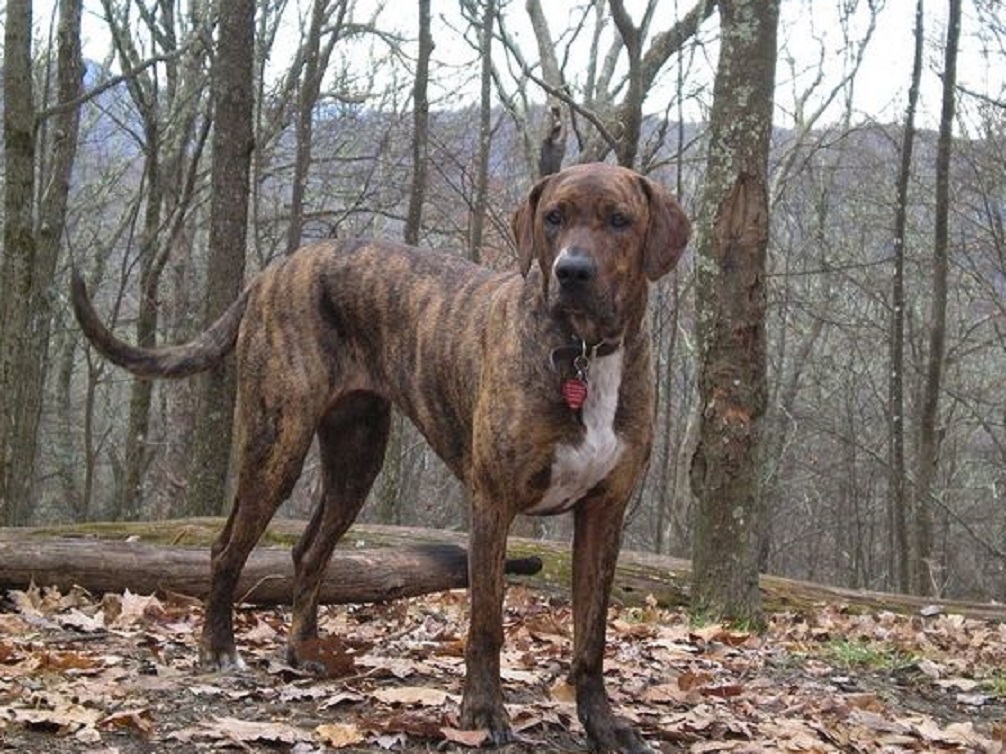
Plott

Navigate through the tabs
Navigate through the tabs below to view the breed's info of your interest.
The breed's info is divided in four sections; namely:
the breed's history ,
the breed's main stats ,
the dog's potential health issues
and finally, how the breed scored in 26 different categories.
All the above information should give you a respectively good overview for the dog of your interest.
Dog Breed's Main Info
The Breed's History:
Of the seven breeds of United Kennel Club (UKC) registered coonhounds, the Plott Hound does not trace its ancestry to the foxhound. And, of those seven breeds, we can be most certain of the Plott's heritage and the men most responsible for its development.
The ancestors of today's Plott Hounds were used for boar hunting in Germany many years ago. Originally from Germany, Johannes "George" Plott emigrated to the United States in 1750. He brought a few wild boar hounds (five Hanoverian Hounds, used for bear and boar hunting) with him. These dogs had been bred for generations for their stamina and gameness.
George and his wife Margaret (Undocumented Maiden Name) with their family settled in the mountains of western North Carolina. Though there is no evidence that George ever came to western North Carolina, his son Henry settled there around 1801 to 1810 (as census discloses) and was responsible for the Plott hound legend of an incredible big game dog. The Plott Balsams are a mountain range that carries the family name to this day.
Plott supposedly kept his strain entirely pure, making no outcrosses. In 1780, the Plott pack passed into the hands of Henry Plott.
Shortly after, a hunter living in Rabun Gap, Georgia, who had been breeding his own outstanding strain of "leopard spotted dogs" heard of the fame of the Plott Hounds and came to North Carolina to see for himself. He was so impressed that he borrowed one of Montraville Plott's top stud dogs for a year to breed to his own bitches.
This single cross is the only known instance of new blood being introduced into the Plott Hound since it first came to this country. Eventually Mont decided not to continue this breeding practice and gave all the leopard dogs away, returning to his original breeding practices.
Other crosses possibly took place around the year 1900. G.P. Ferguson, a neighbor of the Plott family in North Carolina in those days, was a major influence on the Plott breed. He made a careful study of the Blevins hounds and the Cable hounds of that era. The extent to which he used these bloodlines in his Plott breeding program is not known.
The Plott Hound was first registered with the United Kennel Club in 1946. Plotts were recognized by the American Kennel Club in 2006 and were exhibited at Westminster Show in 2008.
Country of Origin:
Germany / United States
Breed Group:
Hound
Height:
1 foot, 8 inch. to 2 feet, 3 inch (50,8 to 68,58 cm)
Weight:
40 to 75 pounds (18,14 to 34,02 Kg)
Life Span:
12 to 14 years
Potential Health Issues:
Elbow Dysplasia,
Hip Dysplasia,
Hypothyroidism,
Von Willebrand's Disease,
Gastric Torsion (Bloat)
Adaptability
Apartment Living:
First Time Owners:
Sensitivity:
Being Alone:
Cold Weather:
Hot Weather:
Friendliness
Affection With Family:
With Kids:
With Dogs:
With Strangers:
Health and Grooming
Shedding:
Drooling:
Easy To Groom:
Overall Health:
Weight Gain Potential:
Size:
Training
Easiness:
Intelligence:
Mouthiness:
Prey Drive:
Barking or Howling:
Wanderlust:
Need For Exercise
Energy Level:
Intensity:
Exercise Needs:
Playfulness:
Our Mobile Application
Check out Our Mobile Application "Dog Breeds Central"
